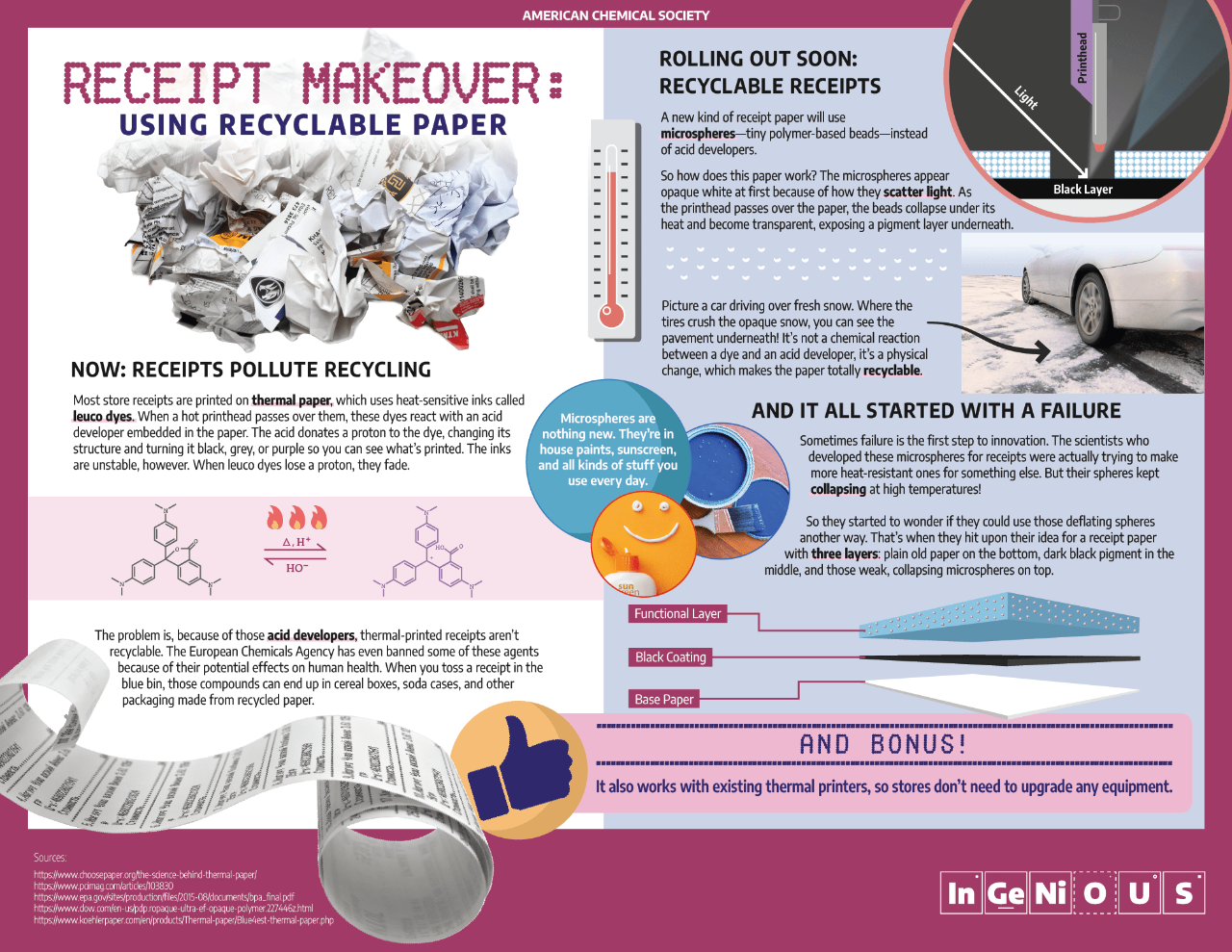Receipt Makeover: Using Recyclable Paper
Now: Receipts Pollute Recycling
Most store receipts are printed on thermal paper, which uses heat-sensitive inks called leuco dyes. When a hot printhead passes over them, these dyes react with an acid developer embedded in the paper. The acid donates a proton to the dye, changing its structure and turning it black, grey, or purple so you can see what’s printed. The inks are unstable, however. When leuco dyes lose a proton, they fade.
The problem is, because of those acid developers, thermal-printed receipts aren’t recyclable. The European Chemicals Agency has even banned some of these agents because of their potential effects on human health. When you toss a receipt in the blue bin, those compounds can end up in cereal boxes, soda cases, and other packaging made from recycled paper.
Rolling Out Soon: Recyclable Receipts
A new kind of receipt paper will use microspheres—tiny polymer-based beads—instead of acid developers.
So how does this paper work? The microspheres appear opaque white at first because of how they scatter light. As the printhead passes over the paper, the beads collapse under its heat and become transparent, exposing a pigment layer underneath.
Picture a car driving over fresh snow. Where the tires crush the opaque snow, you can see the pavement underneath! It’s not a chemical reaction between a dye and an acid developer, it’s a physical change, which makes the paper totally recyclable.
[Caption:] Microspheres are nothing new. They’re in house paints, sunscreen, and all kinds of stuff you use every day.
And It All Started with a Failure
Sometimes failure is the first step to innovation. The scientists who developed these microspheres for receipts were actually trying to make more heat-resistant ones for something else. But their spheres kept collapsing at high temperatures!
So they started to wonder if they could use those deflating spheres another way. That’s when they hit upon their idea for a receipt paper with three layers: plain old paper on the bottom, dark black pigment in the middle, and those weak, collapsing microspheres on top.
[Caption:]
Funcitonal Layer
Black Coating
Base Paper
And bonus!
It also works with existing thermal printers, so stores don’t need to upgrade any equipment.
Sources:
- https://www.choosepaper.org/the-science-behind-thermal-paper/
- https://www.pcimag.com/articles/103830
- https://www.epa.gov/sites/production/files/2015-08/documents/bpa_final.pdf
- https://www.dow.com/en-us/pdp.ropaque-ultra-ef-opaque-polymer.227446z.html
- https://www.koehlerpaper.com/en/products/Thermal-paper/Blue4est-thermal-paper.php






